I've made a beeswarm plot in R by basically looping through groups in my data and creating a beeswarm for each group and combining into one plot:
#Build color field
color.By.Category <- function(x) {
if (x == "Polydrug") {
return("red")
} else if (x == "Opioid") {
return("blue")
} else if (x == "Cocaine") {
return("green")
} else if (x == "Gabapentin") {
return("orange")
} else if (x == "Meth") {
return("blue")
} else if (x == "Benzo") {
return("pink")
} else {
return("black")
}
}
# Make 5 rows, the first is the legend
par(mfrow=c(5,1), mar=c(0,10,0,0), oma=c(10,0,5,2), bg="black")
# Build legend
drug.categories <- unique(death.data.2$drug)
colr <- sapply(drug.categories, color.By.Category)
xleg <- seq(-10,110, by=23)
beeswarm(xleg, pwcol=colr,
horizontal = TRUE,
pch=15,
method="center",
cex=1,
xlim=c(-10,110),
ylim=c(-10,4))
text(x=xleg+0, y=.5, labels=toupper(drug.categories), col="white", pos=4, cex=1.1)
races <- unique(death.data.2$race)
for (i in 1:length(races)) {
# Subset to race/ethnicity
current <- death.data.2[death.data.2$race == races[i],]
# Draw the symbols
beeswarm(current$age, pwcol=current$color,
pch=15, method="center",
cex=1, horizontal=TRUE,
ylim=c(-10,10), xlim=c(0,100), axes=FALSE)
# label
mtext(races[i], side = 2, las=1, col="white", cex=.9)
}
x <- seq(0, 100, 5)
axis(side = 1, labels = x, at=x, col="black", col.ticks = "white")
mtext(x, side = 1, outer=FALSE, at=x, line=.8, col="white", cex=.8)
mtext("Age", side=1, at=x[1], outer=FALSE, col="white", line=2, adj=0.05, padj=.5, cex=.8)
# Title
mtext("Overdose Deaths by Substance Type", side=3, outer=TRUE, line=1, cex=1.5, col="white")
Which looks like this:
You can see there are weird gaps (i.e. blank lanes) where no data is showing, which almost looks like some kind of artifact from how the plot is rendering. What's going on here?
